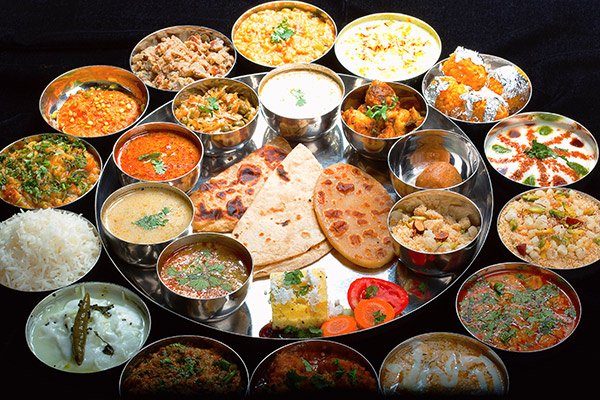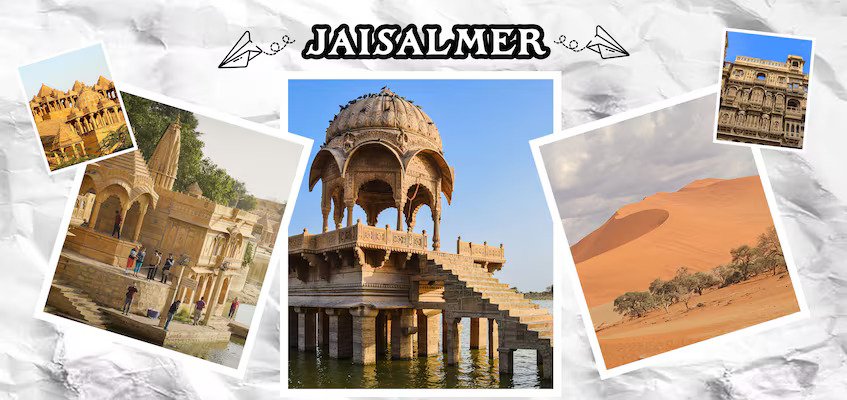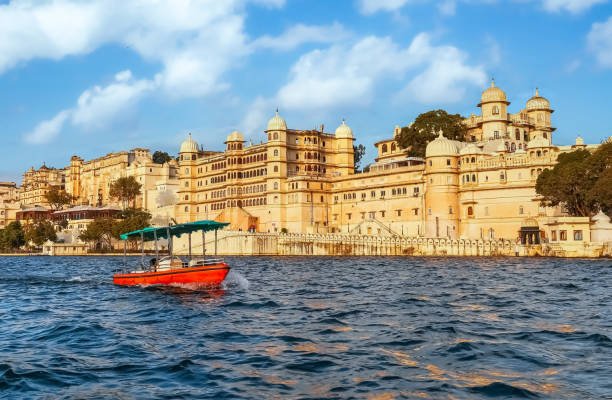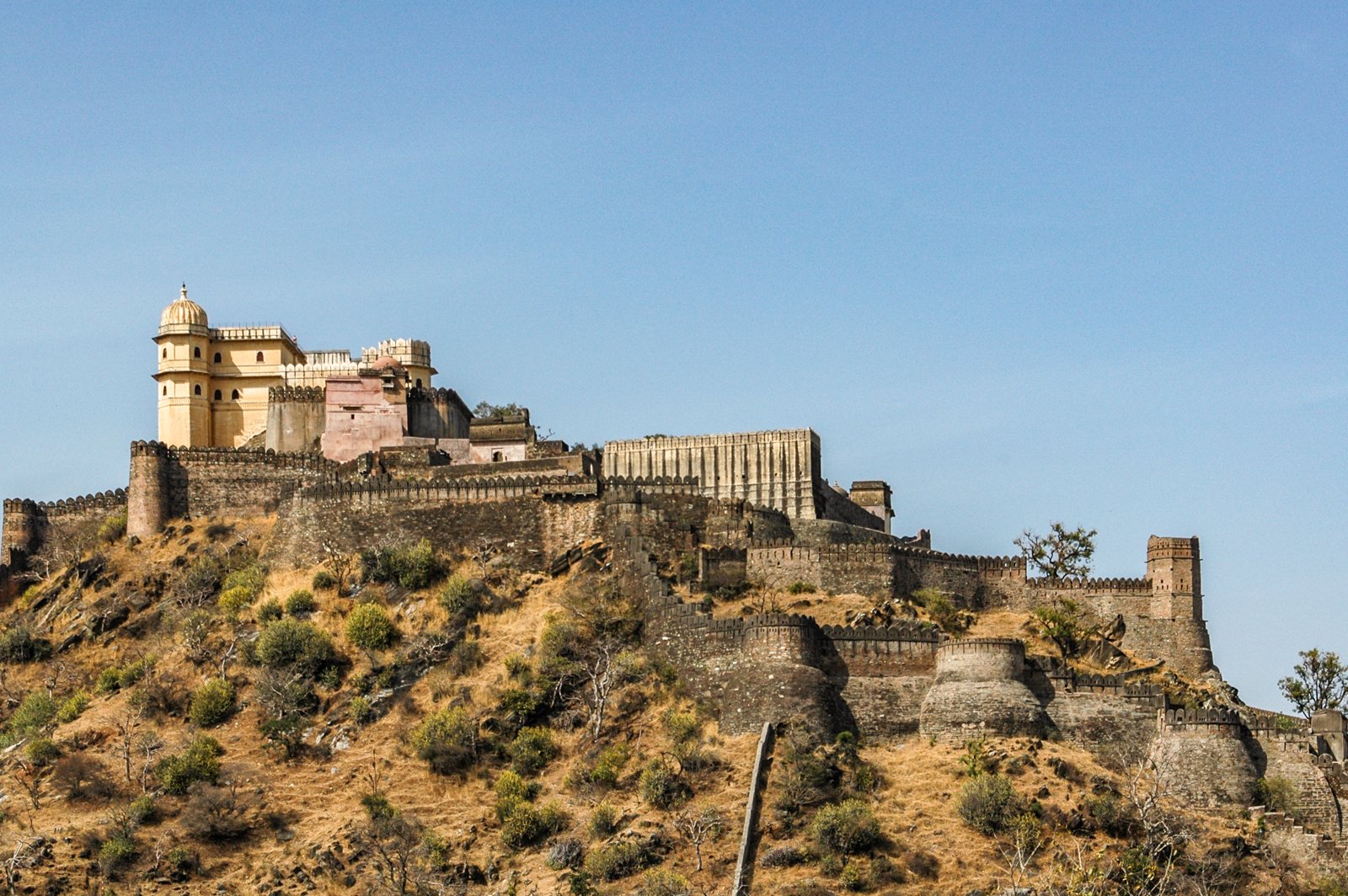Jaipur, the vibrant capital of Rajasthan, is as much a feast for the palate as it is for the eyes. Known for its royal palaces and bustling bazaars, the city’s culinary scene is deeply rooted in its heritage. For food lovers visiting Jaipur, diving into its street delicacies and traditional Rajasthani meals isn’t just about eating—it’s about experiencing the city’s living culture. From spicy snacks to royal thalis, Jaipur offers an unforgettable culinary journey. If you’re looking to discover the Best food tour in india, Jaipur should be high on your list.
Dal Baati Churma – The Quintessential Rajasthani Meal
Dal Baati Churma is a must-try dish that tells the story of Rajasthan’s desert resilience. It’s a hearty combination of baked wheat balls (baati), spicy lentil curry (dal), and sweetened crushed wheat with ghee (churma). Traditionally served on metal plates with generous portions of ghee, this dish reflects the region’s royal yet rustic culinary history. It’s often enjoyed during festivals but is widely available at local restaurants and thali houses across Jaipur.
Laal Maas – Bold, Fiery, and Rich with Tradition
For those who love meat, Laal Maas is a fiery mutton curry that packs flavor and heat. Originating from the royal kitchens, this dish uses succulent pieces of meat cooked in a rich, red chili gravy. The flavor is intense and smoky, thanks to the use of Mathania chilies and slow-cooked spices. Best paired with bajra roti or plain rice, Laal Maas is a signature Rajasthani dish that offers a bold contrast to the usually vegetarian-heavy cuisine of the region.
Pyaaz Kachori – A Spiced Snack from Jaipur’s Streets
Walk through any local market in Jaipur in the morning and you’ll likely be greeted by the aroma of deep-fried Pyaaz Kachoris. These crispy, flaky pastries are stuffed with a spicy onion filling and are usually served with tamarind or mint chutney. Hot and slightly greasy, they’re perfect as a breakfast bite or mid-day snack. Local vendors like Rawat Mishthan Bhandar have made this humble street food iconic, and it continues to draw both locals and travelers.
Gatte ki Sabzi – A Vegetarian Delight
Gatte ki Sabzi is a traditional Rajasthani curry made from gram flour (besan) dumplings simmered in a tangy yogurt-based gravy. The preparation is simple but the flavors are rich and comforting. The soft, spiced gatte absorb the gravy beautifully, making it a favorite in Rajasthani homes. It’s typically served with roti or steamed rice and showcases the region’s ability to create variety from limited ingredients.
Ker Sangri – Desert Flavors in Every Bite
This dry vegetable dish is unique to Rajasthan and particularly beloved in Jaipur. Made from ker (a berry) and sangri (a type of bean), both of which grow in the arid climate, the dish is sautéed with spices and generous amounts of oil. Ker Sangri is salty, tangy, and earthy all at once. It’s often served with bajra roti and garlic chutney. Though not visually fancy, its taste is deeply nostalgic for many Rajasthani families.
Rajasthani Thali – A Royal Feast
One of the best ways to experience Jaipur’s full range of flavors is by trying a traditional Rajasthani thali. These platters often include an assortment of dishes like dal baati churma, gatte ki sabzi, ker sangri, boondi raita, bajra roti, and sweet treats like ghevar or moong dal halwa. Many local restaurants and heritage hotels offer curated thali experiences that give a generous glimpse into royal Rajasthani dining.
Mirchi Vada – A Spicy Street Favorite
Another popular snack from Jaipur’s streets is the Mirchi Vada. Large green chilies are slit and stuffed with a tangy potato mixture, then dipped in gram flour batter and deep-fried until golden. Crispy on the outside and spicy on the inside, it’s served hot with a side of chutney. Don’t be intimidated by the chili—it’s surprisingly mild and addictive once you take a bite.
Mawa Kachori – Sweet, Rich, and Indulgent
Originating from Jodhpur but equally loved in Jaipur, Mawa Kachori is a dessert version of the classic snack. It’s a deep-fried pastry filled with sweetened khoya (milk solids) and nuts, then soaked in sugar syrup. Served warm, this sweet dish is rich, heavy, and utterly satisfying. Many sweet shops in Jaipur have perfected this delicacy, and it’s often brought home as a souvenir of Rajasthani sweetness.
Lassi – Cooling Relief with a Cultural Touch
Jaipur’s version of lassi is thick, creamy, and sometimes topped with a layer of malai or saffron. Served in tall earthen glasses, it’s a refreshing drink after a spicy meal or a hot afternoon of sightseeing. Lassi shops near Johari Bazaar or Bapu Bazaar are known for their traditional preparations that are both cooling and filling.
Jaipur Food Walk – Discover Local Gems on Foot
To truly get under the skin of Jaipur’s food culture, nothing beats a local-guided jaipur food walk tour. These curated tours take you through bustling lanes, hidden eateries, and family-run food joints that often don’t make it into travel guides. You’ll get to taste a variety of snacks, sweets, and drinks while hearing stories of their origin and cultural relevance from knowledgeable guides.
The Food Culture That Lives in Every Bite
Jaipur’s culinary landscape is more than just flavors—it’s a living narrative of tradition, geography, and innovation. Whether it’s the royal origins of Laal Maas or the humble beginnings of street snacks like Pyaaz Kachori, each dish tells a story. With the growing popularity of food tours and heritage dining experiences, visitors now have more access than ever to explore and appreciate this vibrant food culture.
Eating in Jaipur is not just about satisfying hunger—it’s about connecting with a legacy that continues to evolve. From rich curries to unique sweets and spicy snacks, every bite is a celebration of the city’s rich identity.




